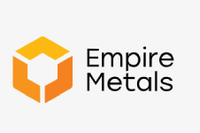Glencore’s Xstrata Takeover May Lift Copper Juniors’ Finances
Glencore’s planned takeover of Xstrata will create a commodities giant. But instead of being threatened, junior copper miners may actually gain from the merger, as the new company could look to them to shoulder risks.
 By Shihoko Goto — Exclusive to Copper Investing News
By Shihoko Goto — Exclusive to Copper Investing News
Glencore International’s (LSE:GLEN) takeover of Xstrata (LSE:XTA) will create the fourth largest mining group in the world, and the sheer size of the new company is grabbing the attention of industry analysts across the globe. Yet junior copper miners are unlikely to be adversely affected by the merger, at least in the near-term. In fact, some analysts argue that the merger may give smaller-sized producers of the red metal more financial opportunities to pursue projects.
Last week Glencore announced that it would buy out Xstrata for about US$37.5 billion, creating a commodities giant that would produce and trade industrial and precious metals as well as other resources. With a market capitalization of $90 billion and annual sales of around $209 billion, Glencore Xstrata International PLC, as the behemoth would be known, would be based in Switzerland, trade on both the London and Hong Kong exchanges, and be incorporated in Jersey. Speculation is abound that the latest mega-merger will lead to further consolidation in the industry, and Ivanhoe Mines‘ CEO Robert Friedland told Dow Jones Newswires that Anglo American (LSE:AAL) is a blatantly obvious takeover target , following a which Glencore made for Anglo American in 2009.
Yet some analysts are not as convinced that Glencore’s takeover represents as big a sea change in the copper mining industry in particular as others perceive it to be.
“What companies really want is to control prices,” said Gary Campbell, professor of natural resource economics at Michigan Technological University. In the case of the copper market, the merged company would still only have a small percentage of the overall copper market, “which won’t give it enough power” to threaten the existing market structure, he added.
Indeed, while news of the impending merger dominated headlines not just in mining journals, the price of copper remained unaffected by the corporate announcement, instead remaining more sensitive to economic fundamentals in global markets.
Meanwhile, Marius Kloppers, CEO of industry behemoth BHP Billiton (LSE:BLT), said following the release of his company’s latest earnings results last week that it will continue to invest in large, low-cost assets that can be expanded, adding that “we believe the potential of a resource company will be defined by its resource base.”
As for the possibility of a larger company such as Glencore Xstrata taking away business from smaller copper miners, Michigan Tech’s Campbell dismissed such concerns, pointing out that while vertical integration was a popular approach four or five decades ago, that one-stop-shop approach to mining, producing, and trading copper is not an efficient business model.
No one company can be “equally good at everything,” so even the largest companies such as BHP Billiton, Rio Tinto (LSE:RIO), and Glencore Xstrata will always hunger for partners that are better at certain operations than they are, Campbell said. In fact, there may be more opportunities for junior miners to find riskier projects, as larger companies such as Glencore Xstrata may be able to finance such risks.
Of course, there is also the possibility that the Glencore Xstrata marriage will not go through. Two of Xstrata’s largest shareholders, Standard Life and Schroders, said they would oppose the price of the friendly all-stock offer whereby Glencore gives 2.8 shares for each of Xstrata’s for a premium of about eight percent. Fidelity Worldwide Investment also weighed in, stating that while it supports the merger in principal, the deal’s terms “need to be revisited.” According to British regulations, if 16.48 percent of shareholders object, the deal could be blocked.
Assuming that the corporate marriage is completed as planned, though, the merger could present a prime opportunity for junior copper miners looking to invest in all geographic regions.
Securities Disclosure: I, Shihoko Goto, have no direct investment interest in any company mentioned in this article.




